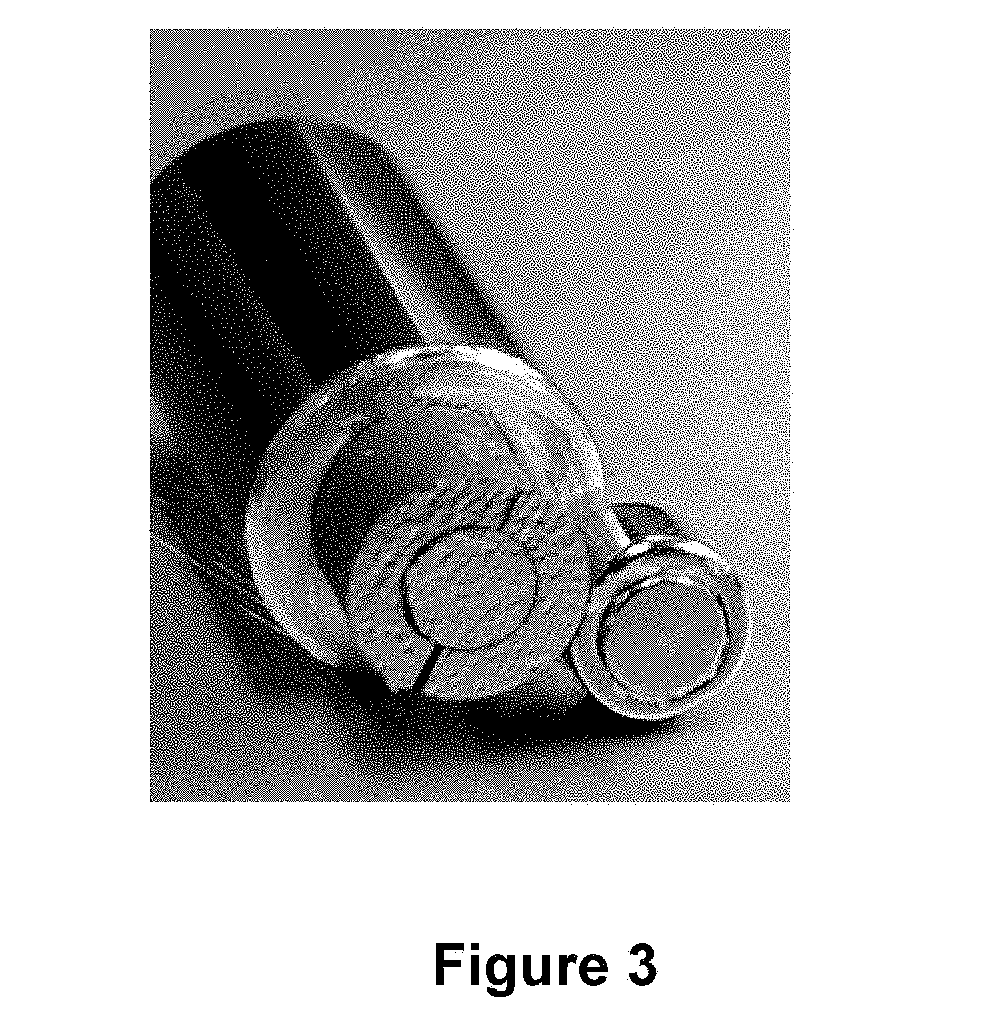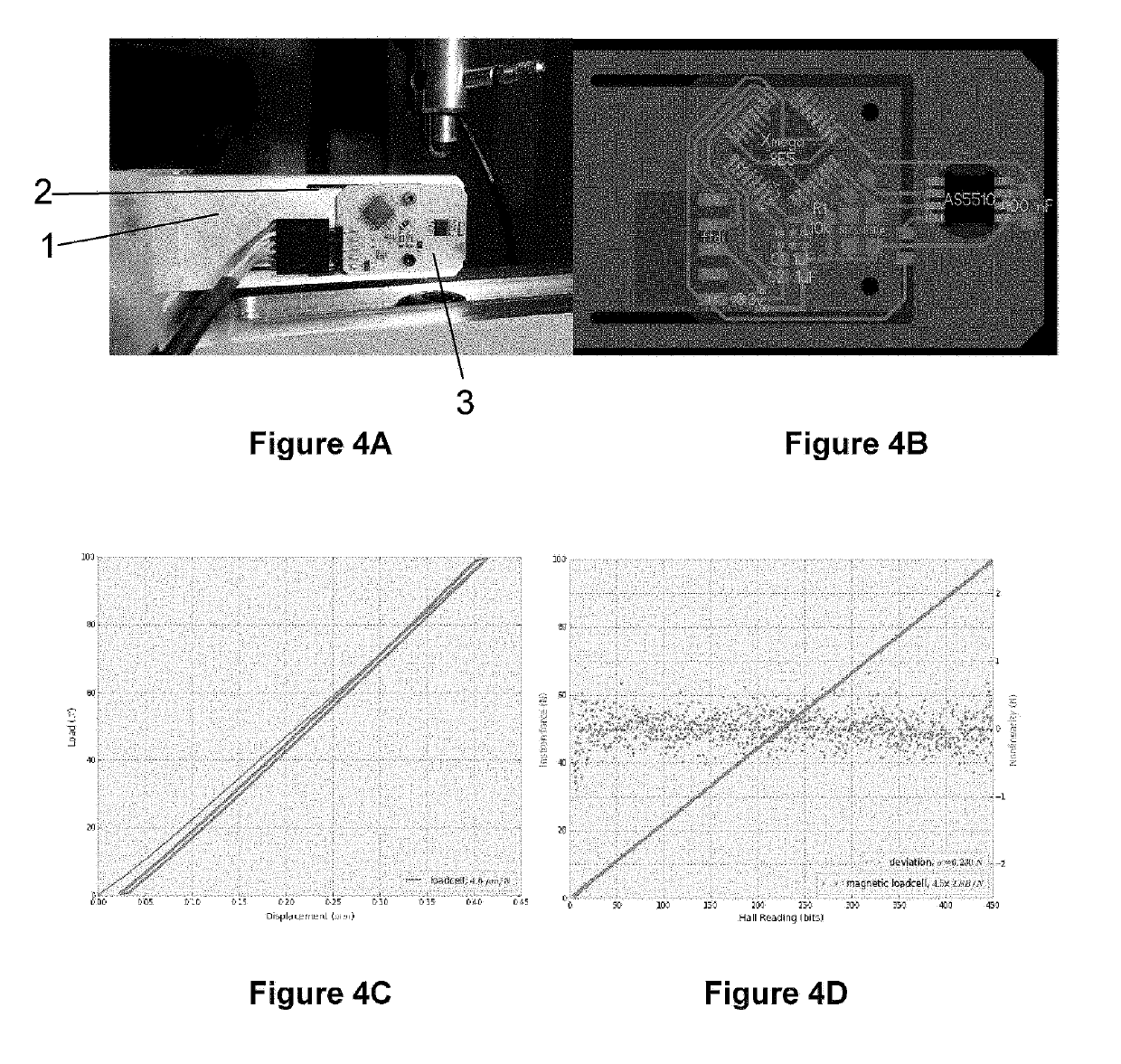Differential magnetic load cells for compact low-hysteresis force and torque measurements
- Summary
- Abstract
- Description
- Claims
- Application Information
AI Technical Summary
Benefits of technology
Problems solved by technology
Method used
Image
Examples
examples of particular embodiments
Single Axis Device
[0040]The first example of a differential magnetic load cell is a single axis measurement device based on the Austrian Microsystems AS5510 10 bit linear encoder IC, which boasts 500 nm resolution. This prototype is shown in FIG. 4A with its circuit board layout shown in FIG. 4B. The circuit board (3) is mounted to a piece of waterjet aluminum (1) with a flexure (2) cut into it. A magnet rests in a hole on the moving part of the flexure. The flexure is designed to have a stiffness of approximately 5 um / Newton. The encoder needs an air gap of less than 1 mm, so the board is milled away inside the SOIC-8 footprint where the AS5510 chip is mounted and the part is flipped over to bring it closer to the magnet underneath. The device uses an 8 mm circular diametrically magnetized magnet. The chip can be operated at its highest sensitivity (+−12.5 mT full scale) and in slow mode (12.5 KHz as opposed to 50 KHz, but with 0.5 mT peak-to-peak noise as opposed to 0.8 mT).
[0041]...
PUM
 Login to view more
Login to view more Abstract
Description
Claims
Application Information
 Login to view more
Login to view more - R&D Engineer
- R&D Manager
- IP Professional
- Industry Leading Data Capabilities
- Powerful AI technology
- Patent DNA Extraction
Browse by: Latest US Patents, China's latest patents, Technical Efficacy Thesaurus, Application Domain, Technology Topic.
© 2024 PatSnap. All rights reserved.Legal|Privacy policy|Modern Slavery Act Transparency Statement|Sitemap



